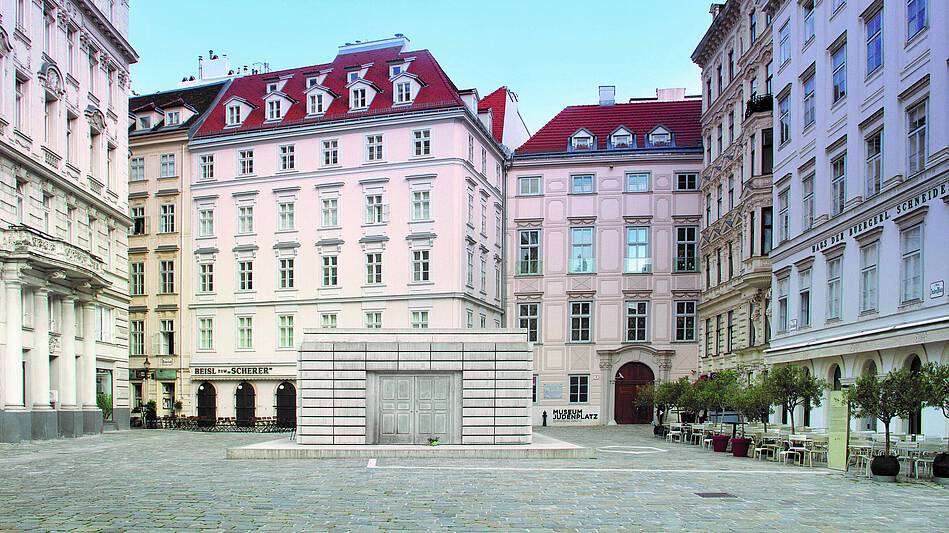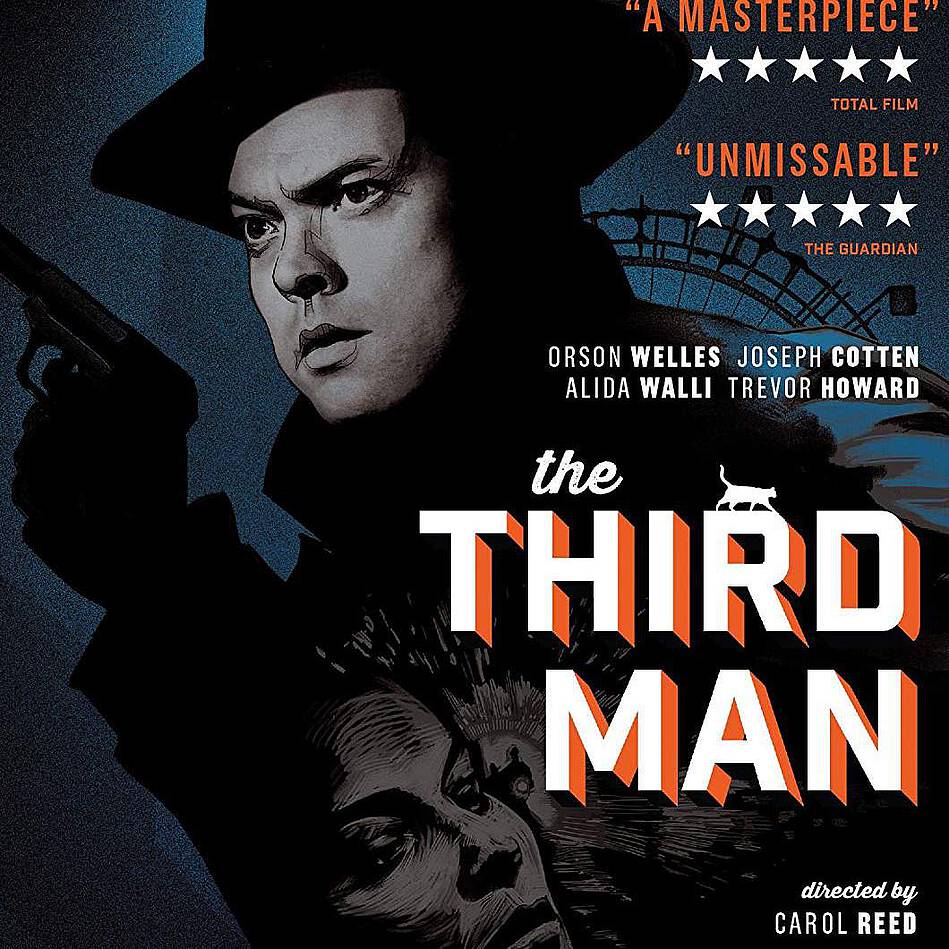
Program proposal with focus: Historic Vienna
A journey through the centuries
Vienna, the capital of Austria, is a city that is characterized above all by its rich history and cultural significance. In this European metropolis, you can still discover numerous traces of the former Habsburg monarchy on almost every corner, as well as remnants of the eventful 20th century. In this blog post, we take you on a journey through the history of this fascinating city - look forward to a journey through the centuries!
With our HOP ON HOP OFF buses, you can also get to the individual sights particularly easily and comfortably!
St. Stephen's Cathedral - Vienna's most important landmark
(Stop No. 1 "State Opera" - Blue & Yellow Line)
Vienna's landmark, St. Stephen's Cathedral, is a masterpiece of Gothic architecture and the heart of the city. The imposing south tower and the colorful tiled roof make the cathedral an unmissable monument. The cathedral was and is the spiritual center of Vienna and has played a central role in the city's history.
Construction of St. Stephen's Cathedral began in the 12th century, but the interior has changed several times over the years and today St. Stephen's Cathedral is the highest church in Austria. St. Stephen's Cathedral consists of a total of four towers, with the south tower being the tallest at 136m. The 68m smaller north tower is home to Austria's most famous bell: the Pummerin - it is also the second largest free-swinging church bell in Europe.
Ruprechtskirche - Vienna's oldest church
(Stop no. 11 "Morzinplatz" - Blue Line)
Ruprechtskirche is considered to be the oldest church in Vienna and probably dates back to the 12th century. However, the claim that it is the oldest church in Vienna remains controversial, as the foundations of St. Peter's Church could presumably be the same age or older. With its simple, Romanesque architecture, the Ruprechtskirche stands in contrast to the city's magnificent Gothic buildings, making it a unique relic of Vienna's early history.
Museum Judenplatz - Insights into the medieval Jewish community of Vienna
(Stop No. 1 "State Opera" - Blue & Yellow Line)
The Museum Judenplatz in Vienna impressively illuminates the Jewish history of the Middle Ages and recalls the once flourishing Jewish community that lived here from the 13th to the 15th century. The focus is on the excavation of the medieval synagogue, which was discovered beneath Judenplatz and is an important testimony to Jewish life in Vienna. At that time, the Jewish community was an important economic and cultural component of the city before it was violently destroyed in the course of the pogroms of 1420/21. The museum conveys the significance of this era and commemorates the tragic fate of the medieval Jews in Vienna.
Schönbrunn Palace - The former summer residence of the Habsburgs
(Stop no. 30 "Schönbrunn Palace" - Yellow Line)
The baroque Schönbrunn Palace is one of Austria's most important cultural assets and was the summer residence of the Habsburgs. With its extensive gardens, the Palm House and the oldest zoo in the world, it offers visitors an insight into the life of the imperial court. The state rooms, where Emperor Franz Joseph I. and Empress Elisabeth once resided, are particularly impressive.
Schönbrunn Palace was also added to the UNESCO World Heritage List in December 1996. Every year, several million visitors from near and far come to experience a touch of imperial splendor. The majestic palace park is particularly easy to explore with the Schönbrunn Panoramabahn, which also allows you to visit the Gloriette in comfort.
Vienna Hofburg - Sisi Museum & Imperial Treasury
(Stop no. 2 "Kunsthistorisches Museum" - Blue & Red Line)
Right in the heart of Vienna lies the imposing Vienna Hofburg, the former seat of the Habsburgs. Today it houses numerous museums, including the Sisi Museum, which is dedicated to the life of the beloved empress, and the Imperial Treasury, where treasures such as the imperial crown of the Holy Roman Empire, the Austrian imperial crown and other priceless Habsburg objects and treasures are on display. The rich heritage of the Austrian monarchy is impressively displayed here.
In the Sisi Museum in particular, visitors can look forward to discovering the true character of the empress, who was often misunderstood, through various personal objects. Even years after her death, the story of the young empress still fascinates many people far beyond Austria, not least due to her tragic demise.
Belvedere Palace - Visit the largest Klimt collection in the world
(Stop no. 34 "Belvedere Palace" - Yellow Line)
The magnificent Belvedere Palace consists of two baroque palaces, the Upper and Lower Belvedere, which once served as the summer residence of Prince Eugene of Savoy. Today it houses one of the most important art collections in Austria, including paintings by Gustav Klimt such as "The Kiss" and works by Egon Schiele.
A total of seven different themed areas on three floors with 420 works can be viewed in the Upper Belvedere. On the second floor, a large section is dedicated to Viennese Modernism and art from around 1900. On May 15, 1955, the Austrian State Treaty was signed in the Belvedere Palace after the Second World War.
The Capuchin Crypt - The Imperial Resting Place
(Stop No. 1 "State Opera" - Blue & Yellow Line)
Almost all Habsburg emperors and empresses rest in the Capuchin Crypt, better known as the Imperial Crypt. This site commemorates the end of an era and is an important monument for those interested in the history of the imperial family.
A tour of the Capuchin Crypt offers an impressive insight into 400 years of Austrian and European history, from the turmoil of the Thirty Years' War to revolutions and the early ideas of a united Europe. The crypt rooms were designed by numerous great artists. Numerous symbols of power can still be found on the coffins today, underlining the imperial claim of the Habsburg dynasty. Today, the mortal remains of 150 personalities rest in this historic site.
Spanish Riding School - "The Ballet of the White Stallions"
(Stop no. 2 "Kunsthistorisches Museum" - Blue & Red Line)
Another highlight of imperial Vienna is the Spanish Riding School, which is world-famous for its classical dressage performances with the famous Lipizzaner horses. The school is the oldest of its kind and still demonstrates a tradition that has developed over the centuries. The baroque Winter Riding School was built under Charles VI from 1729 to 1735 and is home to the most beautiful riding hall in the world.
Votivkirche - A masterpiece of neo-Gothic architecture
(Stop no. 47 "Votivkirche" - Blue & Red Line)
The Votive Church in Vienna was built in the neo-Gothic style and dates back to a dramatic event in the life of Emperor Franz Joseph I. In 1853, the young emperor narrowly escaped an assassination attempt, whereupon his brother, Archduke Ferdinand Maximilian, initiated the construction of the church in gratitude for Franz Joseph's rescue. The Votive Church thus became a symbol of gratitude and imperial faith. It is considered one of the most important neo-Gothic buildings in Europe and was solemnly consecrated in 1879 on the occasion of the silver wedding anniversary of the imperial couple. To this day, the church embodies the close connection between the Habsburgs and the Catholic faith.
Haus des Meeres - From flak tower to fascinating underwater adventure
(Stop no. 3 "Mariahilfer Straße" - Blue & Red Line)
The Haus des Meeres in Vienna is located in a former flak tower, which was built during the Second World War to protect against air raids. After the war, the massive building was put to peaceful use: in 1957 it was converted into an aquarium and terrarium. Today, the Haus des Meeres is home to an impressive variety of sea creatures, reptiles and birds. Its unusual location in the heart of the city, combined with the historical significance of the flak tower, makes it a unique place that appeals to both nature and history enthusiasts.
Jewish Museum & Museum Judenplatz - A place of remembrance and encounter
(Stop No. 1 "State Opera" - Blue & Yellow Line)
The Jewish Museum Vienna and the Museum Judenplatz play a central role in the reappraisal of Vienna's Jewish history, especially the events of the 20th century. Both museums are dedicated to the memory of Vienna's thriving Jewish community, which was one of the largest and most important in Europe before the Second World War. However, the Holocaust led to the almost complete destruction of this community. The exhibitions shed light on the persecution, expulsion and murder of the Jewish population during the Nazi era, but also on the return of Jewish life after 1945. The impressive memorial by Rachel Whiteread, which commemorates the murdered Austrian Jews, is also located on Judenplatz.
Third Man Museum - Immerse yourself in the shadows and secrets of post-war Vienna
(Stop no. 3 "Mariahilfer Straße" - Blue & Red Line)
The unique Third Man Museum in Vienna is dedicated to the famous film classic "The Third Man", which is set in post-war Vienna in the 20th century. The film, which was shot in 1948, reflects the political and social situation in Vienna in the immediate post-war period, when the city was occupied by the Allies and the tensions of the Cold War were already palpable. The museum not only displays original props and background information on the film, but also extensive documentation on Vienna's difficult period in the years after the Second World War, when the city became a center of espionage and international politics.
Sigmund Freud Museum - Discover the roots of psychoanalysis and immerse yourself in the life and work of the father of modern psychology!
(Stop no. 7 "Liechtensteinstraße/Sigmund-Freud-Museum" - Blue Line)
The Sigmund Freud Museum in Vienna is located in the former home and practice of the famous psychoanalyst Sigmund Freud in the Alsergrund district. Freud lived and worked here from 1891 to 1938 before he had to flee into exile in London due to National Socialist persecution. The museum sheds light on Freud's groundbreaking work in the 20th century, when he developed psychoanalysis and revolutionized modern psychotherapy. Original pieces of furniture, writings and personal objects offer an authentic insight into the life of Freud, who shaped the intellectual climate of the time and had an influence far beyond Vienna.
Conclusion
Vienna is a city that covers an impressive range of history and culture. From the splendor of its imperial heritage to its medieval roots and the formative events of the 20th century - Vienna offers a piece of living history at every turn. For travelers and history buffs, Vienna is an unforgettable destination that brings the past to life in all its facets.






